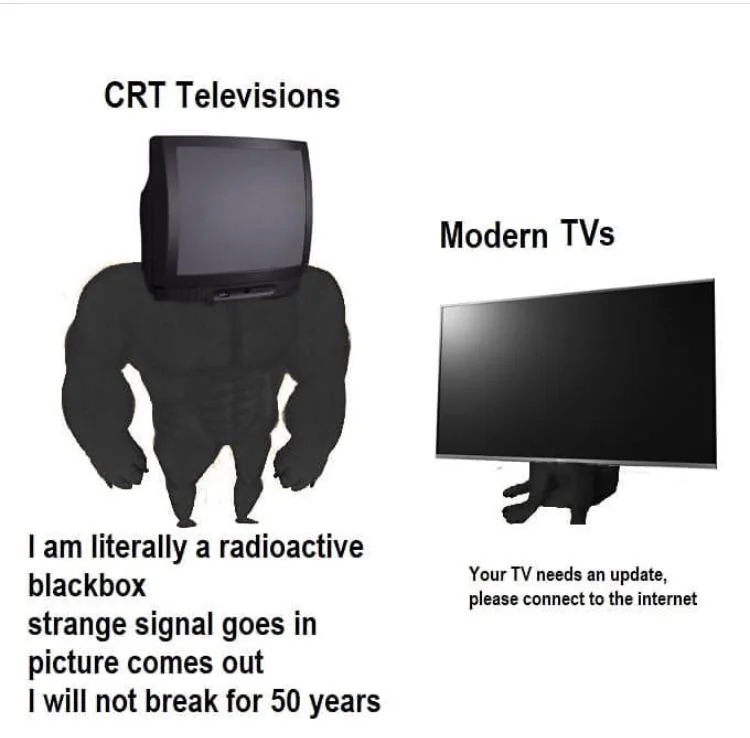this post was submitted on 27 Nov 2023
836 points (95.4% liked)
Memes
8383 readers
921 users here now
Post memes here.
A meme is an idea, behavior, or style that spreads by means of imitation from person to person within a culture and often carries symbolic meaning representing a particular phenomenon or theme.
An Internet meme or meme, is a cultural item that is spread via the Internet, often through social media platforms. The name is by the concept of memes proposed by Richard Dawkins in 1972. Internet memes can take various forms, such as images, videos, GIFs, and various other viral sensations.
- Wait at least 2 months before reposting
- No explicitly political content (about political figures, political events, elections and so on), !politicalmemes@lemmy.ca can be better place for that
- Use NSFW marking accordingly
Laittakaa meemejä tänne.
- Odota ainakin 2 kuukautta ennen meemin postaamista uudelleen
- Ei selkeän poliittista sisältöä (poliitikoista, poliittisista tapahtumista, vaaleista jne) parempi paikka esim. !politicalmemes@lemmy.ca
- Merkitse K18-sisältö tarpeen mukaan
founded 2 years ago
MODERATORS
you are viewing a single comment's thread
view the rest of the comments
view the rest of the comments


Are you sure it was a CRT and not a projection TV? CRTs were limited in size, and they have a reputation for being between lcds and OLED in terms of picture quality (ignoring resolution). Projection TVs, on the other hand, had a reputation for being garbage and the only reason you'd buy one is because you wanted something bigger than a CRT could handle.
There were big CRTs. They were just expensive. We had a Proton that was pretty big. Maybe 40"? There were bigger TVs, but we didn't have the money for them.
There were 40+" CRT TVs (my father got one thrown in for free when he bought his place some years ago and kept usings it because "waste not") and those things had a big back and were pretty heavy, which makes sense because the entire screen area has to be covered by a single electron gun at the back, so bigger screen means it has to be further back as the angle of the electrons can be made to turn when they exit the electron gun is limited, plus it all has to be happenning in vacuum (so that gas molecules don't stop the electrons on their way to the screen) so you end up with the whole screen assembly being a big thick glass vacuum shell, so very heavy.
Even the smaller CRT TVs had quite the big back, partly because of the whole electron gun and max angle thing but also because firing electrons in a vacuum requires more than 1000v, which have to be generated from mains on the TV, and high voltages means big chunky components (plus back in the day the components were naturally bigger than they are now for the same capabilities), so even the smaller screen ones were still quite large in the depth axis because of the space needed for high voltage electronics.
Meanwhile the screens for LCD, OLED and so on are basically sandwiches of thin film forming a grid of cells that get activated/deactivated with reasonably small voltages (depends on the tech but if I'm not mistaken they're all less than 20v) with only the detail that those techs which do not emit light by themselves (such as LCD) need a bit more space for backlighting, all of which can be made way thinner than "enough depth for the electrons from an electron gun to reach the corners of the screen", much lighter than "requires a vacuum shell for all that space" and then again smaller and lighter because it doesn't have any high-voltage electronics inside.